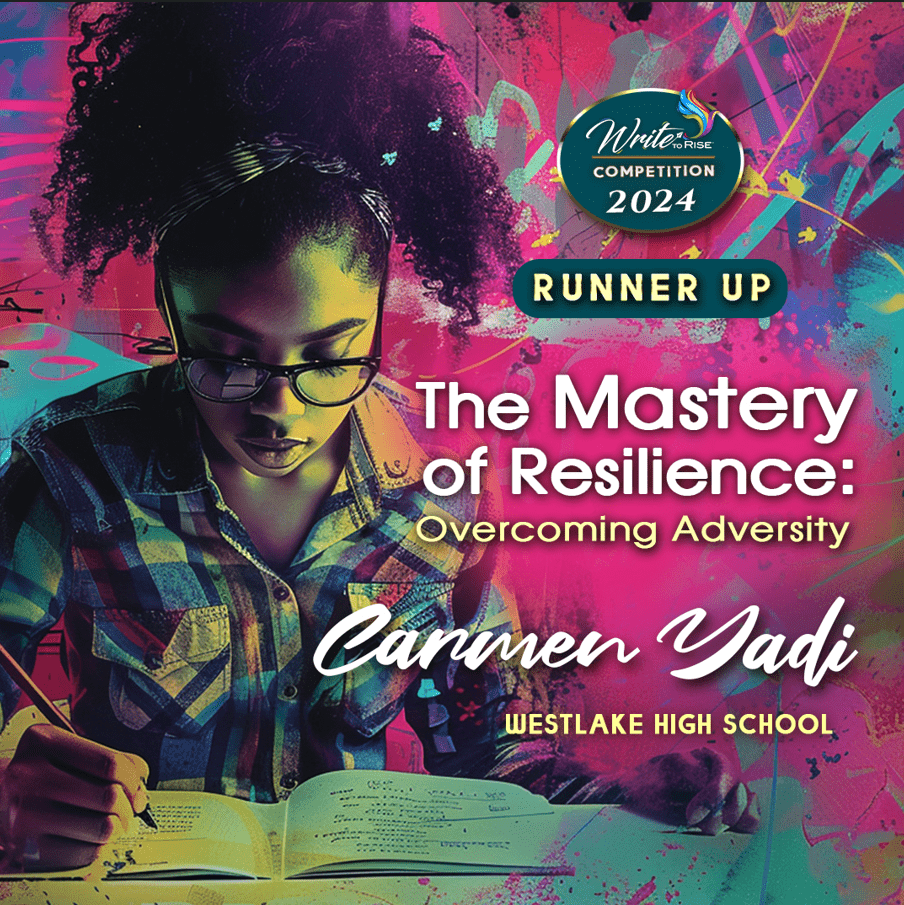Introduction
Resilience is an intrinsic human quality that allows individuals to bounce back from adversity, hardship, and stress. It is not merely about enduring or surviving difficulties but thriving and growing through them. This essay explores the art of resilience, examining how it manifests in various forms, the factors that contribute to it, and its significance in overcoming adversity. The discussion will integrate insights from psychology, sociology, and personal narratives to provide a comprehensive understanding of resilience.
Defining Resilience
Resilience is often described as the capacity to recover quickly from difficulties. Psychologically, it involves adaptive responses to adversity, where individuals maintain or regain mental health despite facing significant stressors (Masten, 2001). This definition highlights resilience as a dynamic process rather than a static trait, emphasizing the interaction between individuals and their environments (Luthar, Cicchetti, & Becker, 2000).
The Building Blocks of Resilience
Several factors contribute to the development and strengthening of resilience. These can be broadly categorized into individual attributes, social support systems, and Carmen Yadi Page 2 external resources.
1. Individual Attributes: Personal qualities such as optimism, self-efficacy, and emotional regulation are crucial for resilience. Optimism fosters a positive outlook on life and encourages problem-solving attitudes (Carver, Scheier, & Segerstrom, 2010). Self-efficacy, or the belief in one’s ability to influence events and outcomes, empowers individuals to face challenges confidently (Bandura, 1997). Emotional regulation enables individuals to manage their responses to stress effectively, preventing overwhelming feelings from impeding their coping strategies (Gross, 2002).
2. Social Support Systems: Relationships with family, friends, and communities provide emotional support, practical assistance, and a sense of belonging. These connections are vital in buffering against stress and fostering resilience (Cohen, 2004). Social support not only offers comfort but also facilitates access to resources and information necessary for overcoming challenges.
3. External Resources: Access to education, healthcare, and financial stability are external resources that significantly impact resilience. These resources provide individuals with the tools and opportunities to rebuild their lives after adversity. For instance, education enhances problem-solving skills and knowledge, healthcare ensures physical and mental well-being, and financial stability reduces stress related to economic hardships (Rutter, 1987).
The Role of Resilience in Overcoming Adversity
Resilience plays a pivotal role in helping individuals navigate and overcome adversity. It transforms challenges into opportunities for growth and development, fostering a sense of purpose and achievement.
1. Adaptation and Recovery: Resilient individuals demonstrate an ability to adapt to new circumstances and recover from setbacks. This adaptive capacity is critical in environments where change and uncertainty are constants. For example, in the face of natural disasters, resilient communities mobilize resources, adapt to new living conditions, and rebuild their lives, often emerging stronger (Norris, Stevens, Pfefferbaum, Wyche, & Pfefferbaum, 2008).
2. Mental Health and Well-being: Resilience is closely linked to mental health and well -being. It acts as a buffer against the negative effects of stress, reducing the risk of mental health disorders such as depression and anxiety (Bonanno, 2004). By maintaining a positive outlook and employing effective coping strategies, resilient individuals can preserve their mental health even in the face of significant adversity.
3. Personal Growth: Adversity can be a catalyst for personal growth, fostering qualities such as empathy, wisdom, and inner strength. This phenomenon, often referred to as post-traumatic growth, underscores the potential for positive change following traumatic experiences (Tedeschi & Calhoun, 2004). Resilient individuals harness their experiences to gain new insights, develop stronger relationships, and cultivate a deeper appreciation for life.
Case Studies in Resilience
To illustrate the multifaceted nature of resilience, it is useful to examine real-life examples of individuals and communities that have demonstrated remarkable resilience in the face of adversity.
1. Nelson Mandela: Mandela’s life is a testament to resilience. Despite spending 27 years in prison, he emerged with a commitment to reconciliation and peace, leading South Africa out of apartheid. His unwavering belief in justice and equality, coupled with his ability to forgive, highlights the power of resilience in transforming personal suffering into societal change (Mandela, 1994).
2. Malala Yousafzai: Malala’s advocacy for girls’ education in Pakistan, despite being shot by the Taliban, exemplifies resilience. Her courage and determination to continue her mission, even after such a traumatic event, have inspired millions worldwide and underscored the importance of education and empowerment (Yousafzai, 2013).
3. Communities in Post-Katrina New Orleans: The recovery efforts in New Orleans following Hurricane Katrina demonstrate communal resilience. Despite widespread devastation, the community’s collective effort to rebuild, support each other, and address systemic inequalities highlights the power of solidarity and shared purpose in overcoming adversity (Weil, 2009).
Cultivating Resilience
While some aspects of resilience are inherent, it is possible to cultivate and strengthen this quality through intentional practices and interventions.
1. Developing a Growth Mindset: Embracing a growth mindset, or the belief that abilities
and intelligence can be developed through effort and learning, fosters resilience. This mindset encourages individuals to view challenges as opportunities for growth rather than insurmountable obstacles (Dweck, 2006).
2. Building Strong Relationships: Investing in relationships and building strong social networks provide emotional support and practical assistance during difficult times. These connections offer a sense of belonging and reduce feelings of isolation, enhancing resilience (House, Umberson, & Landis, 1988).
3. Practicing Self-care: Prioritizing physical and mental health through self-care practices such as exercise, healthy eating, mindfulness, and sufficient rest is crucial for resilience. These practices help maintain overall well-being and equip individuals with the energy and focus needed to tackle challenges (Penedo & Dahn, 2005).
4. Seeking Professional Help: In times of significant stress or trauma, seeking professional help from therapists, counselors, or support groups can provide essential
guidance and support. Professional interventions can offer strategies and tools for coping with adversity and building resilience (American Psychological Association, 2014).
Conclusion
The art of resilience is a dynamic and multifaceted process that enables individuals to triumph over adversity. It involves a combination of personal attributes, social support, and external resources, all of which contribute to an individual’s ability to adapt, recover, and grow from challenges. By cultivating resilience, individuals and communities can navigate hardships with strength and emerge stronger, embodying the human spirit’s remarkable capacity for resilience and transformation. The mastery of resilience is not a trait that emerges in the absence of adversity, but rather in its Constant presence. True resilience is forged in the crucible of challenge, where every setback is a lesson and every obstacle a stepping stone. It is the unwavering strength
To rise after each fall, the courage to confront fears head-on, and the wisdom to adapt In the face of change. Those who master resilience understand that adversity is not a barrier, but a bridge to growth and self-discovery. They embrace difficulties, knowing
that within each challenge lies an opportunity to refine their character and expand their capabilities. In the dance of life, resilience is the rhythm that keeps us moving forward, the light that guides us through the darkest of times. To master resilience is to embrace the journey with all its uncertainties and to emerge stronger, wiser, and more
compassionate,
References
American Psychological Association. (2014). The Road to Resilience. Retrieved from https://www.apa.org/helpcenter/road-resilience
Carmen Yadi Page 7
Bandura, A. (1997). Self-efficacy: The exercise of control. W.H. Freeman.
Bonanno, G. A. (2004). Loss, trauma, and human resilience: Have we underestimated the human capacity to thrive after extremely aversive events? *American Psychologist, 59*(1), 20-28.
Carver, C. S., Scheier, M. F., & Segerstrom, S. C. (2010). Optimism. *Clinical Psychology Review, 30*(7), 879-889.
Cohen, S. (2004). Social relationships and health. *American Psychologist, 59*(8), 676 -684.
Dweck, C. S. (2006). Mindset: The New Psychology of Success. Random House.
Gross, J. J. (2002). Emotion regulation: Affective, cognitive, and social consequences. *Psychophysiology, 39*(3), 281-291.
House, J. S., Umberson, D., & Landis, K. R. (1988). Structures and processes of social support. *Annual Review of Sociology, 14*, 293-318.
Luthar, S. S., Cicchetti, D., & Becker, B. (2000). The construct of resilience: A critical evaluation and guidelines for future work. *Child Development, 71*(3), 543-562.
Mandela, N. (1994). Long Walk to Freedom: The Autobiography of Nelson Mandela. Little, Brown and Company.
Carmen Yadi Page 8
Masten, A. S. (2001). Ordinary magic: Resilience processes in development. *American Psychologist, 56*(3), 227-238.
Norris, F. H., Stevens, S. P., Pfefferbaum, B., Wyche, K. F., & Pfefferbaum, R. L. (2008).
Community resilience as a metaphor, theory, set of capacities, and strategy for disaster readiness. *American Journal of Community Psychology, 41*(1-2), 127-150.
Penedo, F. J., & Dahn, J. R. (2005). Exercise and well-being: A review of mental and physical health benefits associated with physical activity. *Current Opinion in Psychiatry, 18*(2), 189-193.
Rutter, M. (1987). Psychosocial resilience and protective mechanisms. *American Journal of Orthopsychiatry, 57*(3), 316-331.
Tedeschi, R. G., & Calhoun, L. G. (2004). Posttraumatic growth: Conceptual foundations
and empirical evidence. *Psychological Inquiry, 15*(1), 1-18.
Weil, F. (2009). The Rise of Community Engagement after Hurricane Katrina. In *The Sociology of Katrina: Perspectives

